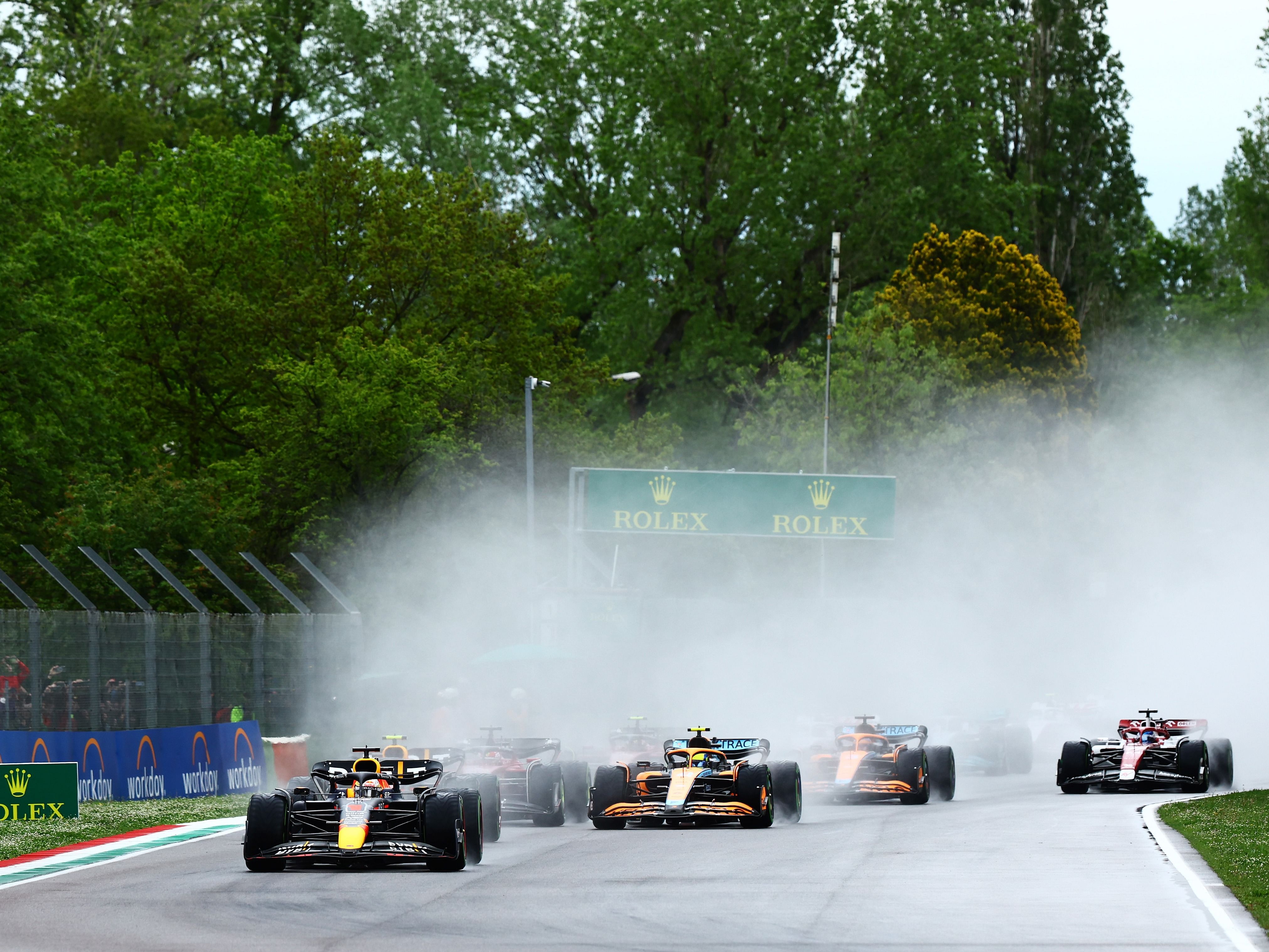Beyond 40: Examining The Careers Of F1 Drivers In Their Later Years

Table of Contents
The Physical and Mental Demands of F1 Racing After 40
Formula 1 is brutally demanding, even for drivers in their prime. The physical challenges intensify as drivers age. The intense G-forces experienced during cornering, braking, and acceleration take a significant toll on the body. Beyond the age of 40, the effects are more pronounced.
- Increased risk of injury: Decreased muscle mass and bone density increase the risk of fractures and longer recovery times from even minor incidents. A simple crash that a younger driver might shake off could have more severe consequences for an older driver.
- Slower reaction times: Even fractions of a second can make a difference in F1. Age-related decline in reaction time can significantly impact a driver's ability to make crucial decisions during high-speed maneuvers.
- Reduced stamina: The physical endurance needed to handle the intense demands of a Grand Prix weekend, including practice sessions, qualifying, and the race itself, becomes increasingly challenging as drivers age.
Beyond the physical aspects, maintaining peak mental performance is equally crucial. The mental pressure of competing against younger, faster drivers, managing strategic decisions under immense pressure, and staying focused throughout a race requires immense mental fortitude, a skill honed over years but still tested by the relentless demands of F1. Drivers who successfully navigate their later years often highlight the importance of mental training and unwavering focus.
Adapting Driving Styles and Strategies for Longevity
As F1 drivers age, adapting their driving style and race strategies is essential for continued success. Aggressive, high-risk overtaking maneuvers may become less frequent, replaced by a more calculated and consistent approach.
- Consistency over aggression: Older drivers often prioritize consistent performance over risky overtaking attempts. This involves maintaining a steady pace, minimizing errors, and focusing on maximizing points in each race.
- Race management and tire conservation: Experience plays a crucial role here. Older drivers often possess a greater understanding of tire degradation and fuel management, allowing them to conserve resources and maintain performance over the race distance.
- Calculated risks: While aggression might decrease, strategic risk-taking doesn't disappear. Experienced drivers can assess and manage risk more effectively, making calculated decisions that maximize their chances of success.
This adaptability isn't about slowing down; it's about leveraging experience and racecraft to compensate for age-related physical limitations. It’s about intelligent driving, using cunning and strategy to overcome physical changes.
The Role of Technology and Team Support in Extending Careers
Advancements in technology and the unwavering support of a strong team are critical in enabling older drivers to continue competing at the highest level. Modern F1 cars are designed with enhanced ergonomics and driver comfort, minimizing the physical strain on the driver.
- Improved ergonomics: Modern cockpits are designed to be more comfortable and supportive, reducing the physical strain on the driver's body.
- Advanced data analysis: Teams can now use sophisticated data analysis tools to optimize driving strategies, car setup, and tire management, enhancing the performance of their drivers regardless of age.
- Tailored training programs: Dedicated physical and mental training programs tailored to the specific needs of older drivers help them maintain peak physical and mental condition.
Strong driver-engineer communication is also key. The ability to effectively communicate needs and preferences to the engineering team facilitates adjustments to the car and race strategy to optimize performance.
Notable Examples of Successful F1 Drivers Over 40
Several drivers have proven that age is just a number in Formula 1. While a comprehensive list is beyond the scope of this article, drivers like Rubens Barrichello (who had podium finishes well into his late 30s and early 40s) and Jarno Trulli (who continued competing with consistent results for a period after 40) demonstrate the potential for continued success with strategic adaptation and relentless dedication. Their achievements showcase the value of experience, strategic acumen, and technological advancements in mitigating age-related performance declines.
Conclusion
The journey Beyond 40 F1 Drivers is not simply about physical prowess; it's a testament to experience, strategic adaptation, technological advancements, and unwavering dedication. While the physical and mental demands of F1 racing remain undeniably challenging, older drivers can achieve significant success by embracing change, employing effective strategies, and leveraging the support of their teams. The key takeaways highlight the critical roles of physical and mental fitness, technological innovation, and strategic adjustments.
We encourage you to share your opinions on the topic of "Beyond 40 F1 Drivers" in the comments section below. Do you believe we'll see more drivers competing successfully into their forties in the future? What factors will influence this trend? Let's discuss! For further reading on age and athletic performance, explore resources focused on aging and endurance sports.

Featured Posts
-
 Ardisson Contre Baffie Il Vient Cracher Dans La Soupe La Polemique Enflamme Les Reseaux Sociaux
May 26, 2025
Ardisson Contre Baffie Il Vient Cracher Dans La Soupe La Polemique Enflamme Les Reseaux Sociaux
May 26, 2025 -
 Rio Tintos Pilbara Project A Response To Environmental Concerns Raised By Andrew Forrest
May 26, 2025
Rio Tintos Pilbara Project A Response To Environmental Concerns Raised By Andrew Forrest
May 26, 2025 -
 L Affaire Qui A Change Le Cours De La Vie Politique De Marine Le Pen
May 26, 2025
L Affaire Qui A Change Le Cours De La Vie Politique De Marine Le Pen
May 26, 2025 -
 The F1 40 Club Triumphs And Setbacks Of Aging Racing Stars
May 26, 2025
The F1 40 Club Triumphs And Setbacks Of Aging Racing Stars
May 26, 2025 -
 Has Armando Iannucci Lost His Touch A Critical Examination
May 26, 2025
Has Armando Iannucci Lost His Touch A Critical Examination
May 26, 2025
Latest Posts
-
 Kanye West And Bianca Censori Understanding The Publics Interest And Speculation
May 28, 2025
Kanye West And Bianca Censori Understanding The Publics Interest And Speculation
May 28, 2025 -
 Rayan Cherki To Manchester United Transfer Speculation Mounts
May 28, 2025
Rayan Cherki To Manchester United Transfer Speculation Mounts
May 28, 2025 -
 Kanye Wests Wife Bianca Censori A Look At Her Recent Public Appearances
May 28, 2025
Kanye Wests Wife Bianca Censori A Look At Her Recent Public Appearances
May 28, 2025 -
 Manchester Uniteds Summer Pursuit Of Rayan Cherki A Realistic Possibility
May 28, 2025
Manchester Uniteds Summer Pursuit Of Rayan Cherki A Realistic Possibility
May 28, 2025 -
 Whats Happening With Kanye West And Bianca Censori A Look At Recent Events
May 28, 2025
Whats Happening With Kanye West And Bianca Censori A Look At Recent Events
May 28, 2025
